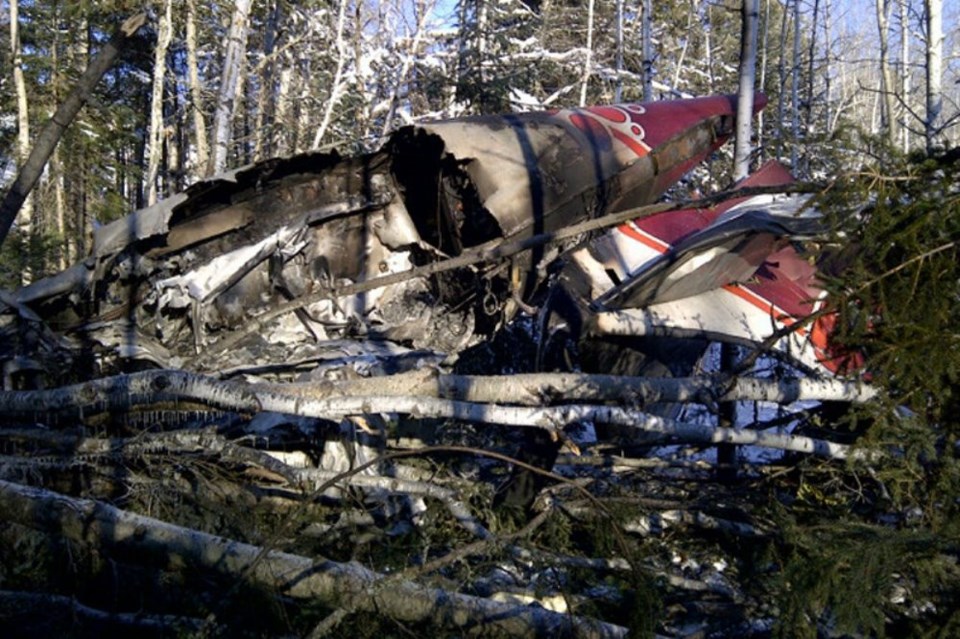A total loss of engine power is being blamed for a fatal 2013 plane crash that killed five people near Red Lake, Ont.
Three passengers and two pilots died in the Nov. 10 crash when Bearskin Airlines flight 311, which had most recently left Sioux Lookout, slammed into the ground on its final approach into the Red Lake Airport.
The flight originated in Thunder Bay and was scheduled to stop in Sioux Lookout, Red Lake and Winnipeg.
There were two survivors.
The aircraft was subsequently destroyed by a post-crash fire, according to a report filed Tuesday by the Transport Safety Board.
According to the TSB document, at 6:27 p.m. CST the pilots reported they were five miles from the airport then shortly afterward declared an emergency at 6:29 p.m. declaring “mayday” at least three times.
The 22-year-old Fairchild SA227-AC Metro III struck trees and power lines adjacent to Highway 125, slammed into the ground and caught fire, destroying what remained of the aircraft.
Emergency units were dispatched, and the two survivors were immediately transported to hospital for treatment of their injuries.
The plane’s emergency locator did not activate.
According to flight-recorder data, the plane experienced a left-engine malfunction at 6:28 p.m., about 56 seconds before the plane hit the ground. The right engine was working properly at impact.
After striking trees the plane’s left wing was torn off and it travelled about 375 feet before hitting power lines adjacent to the highway, which it subsequently struck, tearing the left engine and propeller from the aircraft.
It then cartwheeled and slid tail-first, eventually coming to rest about 150 feet from the highway in a nest of trees.
A post-mortem examination showed no signs of alcohol or drug use by the plane’s pilots.
The report says the passenger in the left rear seat was able to open an emergency exit, and then helped the other surviving passenger exit the plane.
One of the survivors then called 911.
As a result of the crash Bearskin Airlines last May updated its single engine procedures, directing pilots to increase power to a failed engine to minimize drag, as well as adding guidance in its flight manual on how to deal with a loss of power on approach and landing.
The engine manufacturer has also made changes, increasing the frequency of fuel-nozzle inspections from 450 hours to 350 hours.
Sign in or register
- Messages
- Post a Listing
- Your Listings
- Your Profile
- Your Subscriptions
- Your Likes
- Your Business
- Support Local News
- Payment History
Registered Users
Already have an account?
New Users
Create a free account.
